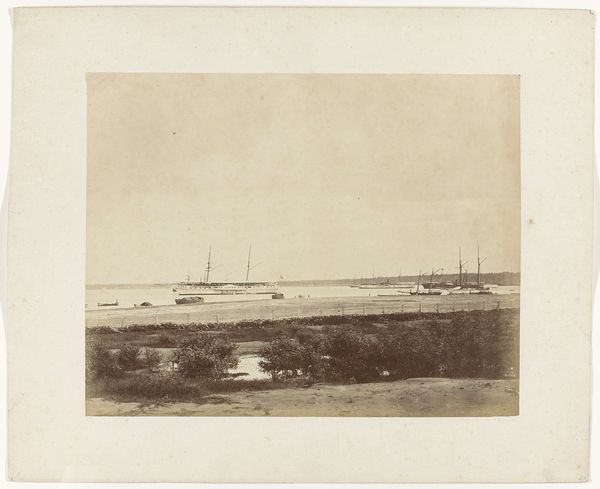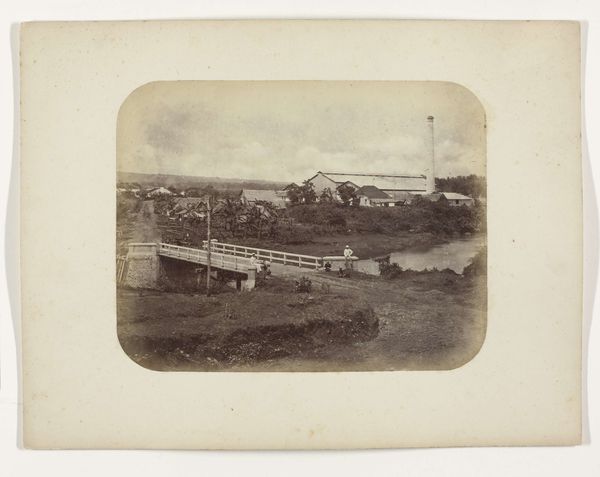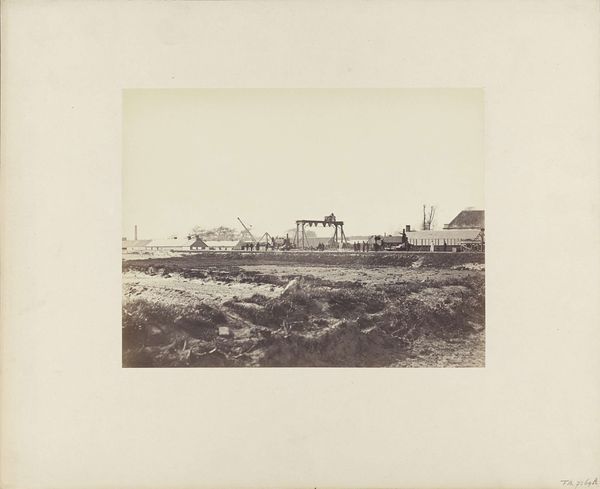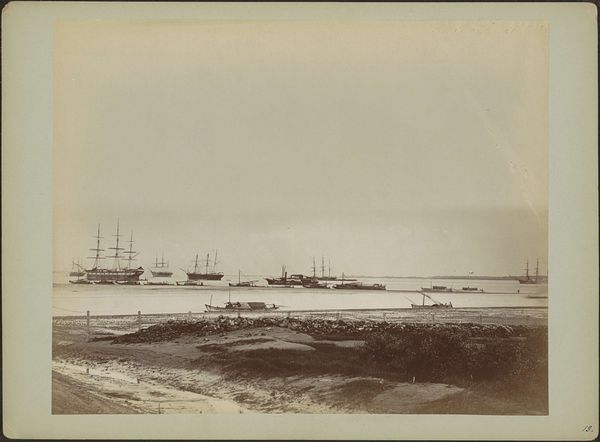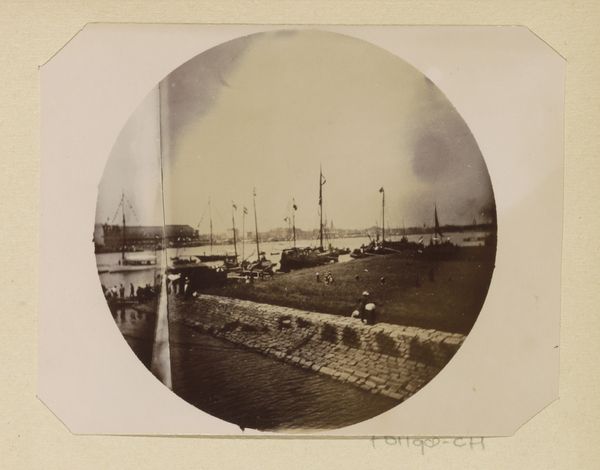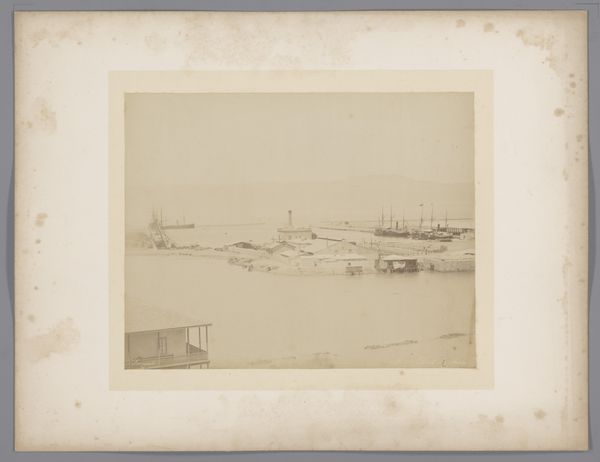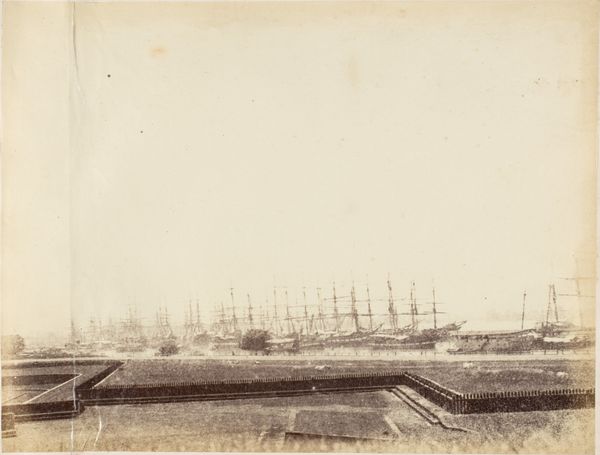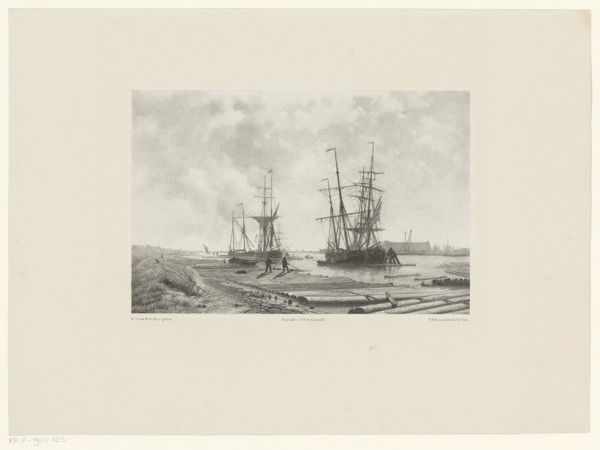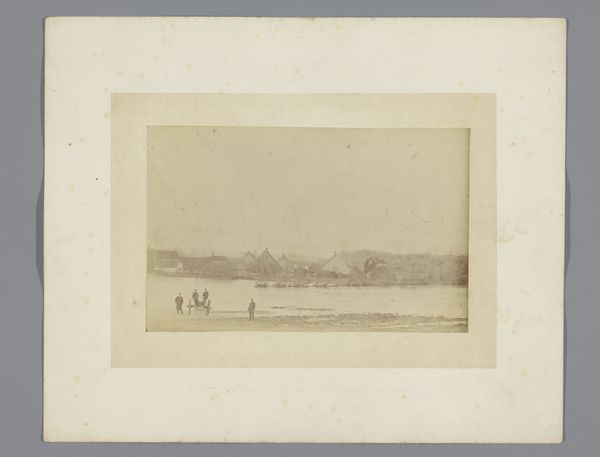
photography, gelatin-silver-print
#
landscape
#
photography
#
orientalism
#
gelatin-silver-print
#
cityscape
Dimensions: height 21.4 cm, width 27.1 cm
Copyright: Rijks Museum: Open Domain
Editor: So here we have Herman Salzwedel's gelatin silver print, "De rede van Surabaya," taken sometime between 1876 and 1884. It gives off this really calm, almost melancholic vibe with the soft focus and the ships resting on the water. What captures your attention when you look at this piece? Curator: It's funny you mention melancholic. To me, it whispers of faraway places and forgotten empires, of sea breezes thick with the scent of spice. But, beyond that initial wash of feeling, I'm drawn to the photographic process itself. Imagine the hours involved, lugging equipment and wrestling with light on the other side of the world! Salzwedel isn't just recording a place; he's also telling a story about effort, about a different world encountering a new technology. Don't you think? Editor: Absolutely! The effort put into capturing this moment, so different from today’s instant photography. Did the "orientalism" movement influence photographers like Salzwedel and how they frame scenes of Surabaya? Curator: Ah, that's a vital question. No doubt orientalist ideas played a role. The framing—that deliberate arrangement of the foreign—was often driven by European expectations and biases. But was Salzwedel simply perpetuating stereotypes, or trying to offer a deeper understanding? I think it's less one than the other. Instead, perhaps the two elements played off of one another in a sort of...cultural feedback loop! Editor: I hadn’t thought about it as a cultural feedback loop, more like an active, intercultural creation, you know? Curator: Precisely. This single image can suggest such varied and differing ideas when examined and understood as a moment that is more multifaceted than the image reveals initially. What a compelling image to analyze and consider.
Comments
No comments
Be the first to comment and join the conversation on the ultimate creative platform.
